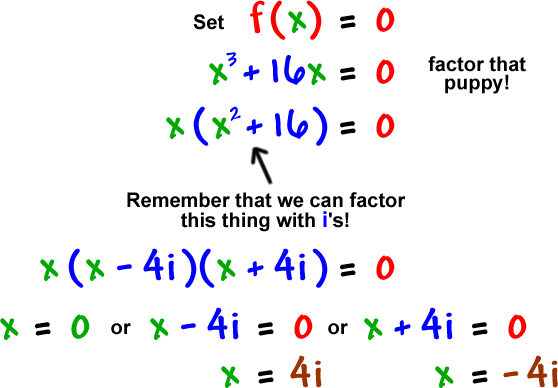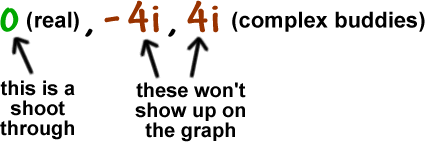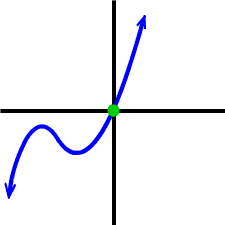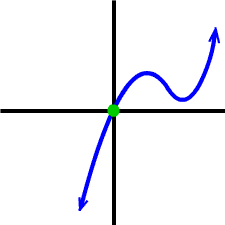There's one more biggie.
Remember that theorem about real zeros?
An nth degree polynomial has, at most, n real zeros. |
Well, dude, now that we have complex zeros, we can say this:
An nth degree polynomial has |
*This includes real and complex.
So, now, if we have a 3rd degree polynomial... we WILL get 3 zeros!
Check it out:
Find the zeros of:
![]()
then draw a rough sketch of the graph:
What's his basic shape?

Let's find those zeros:

zeros:

The best we can do here is to make our best guess at the graph based on what we have...
| or |
|
Check it on the graphing calculator! (You probably won't see any wobble at all.)

